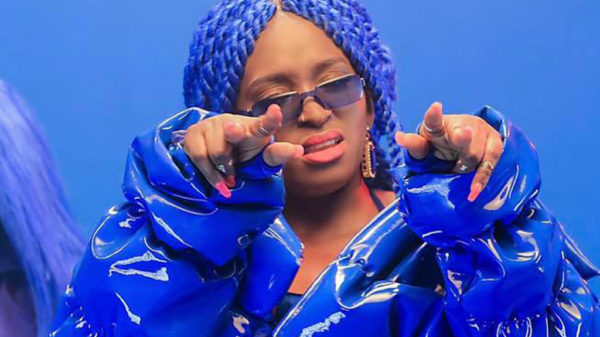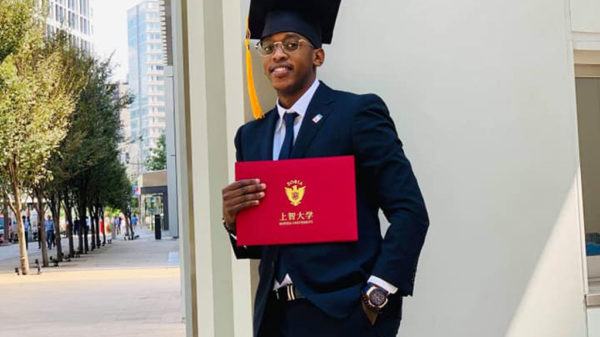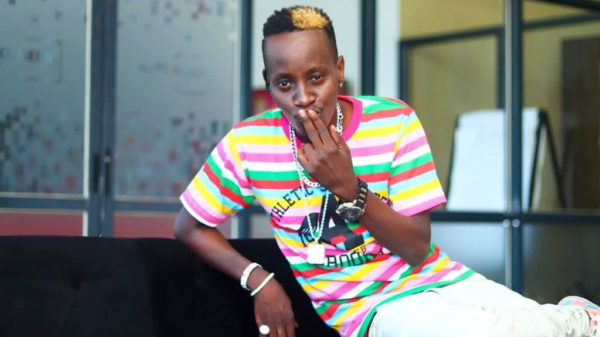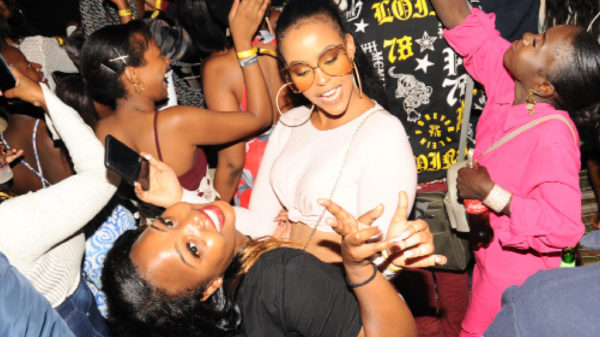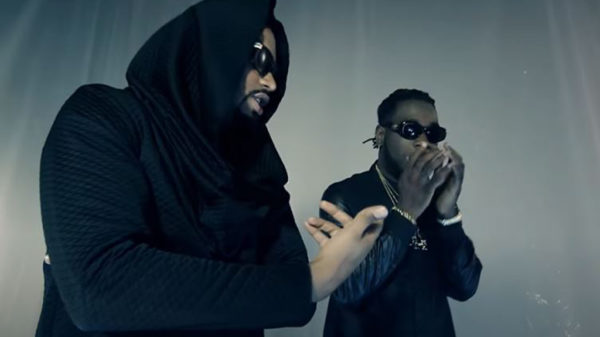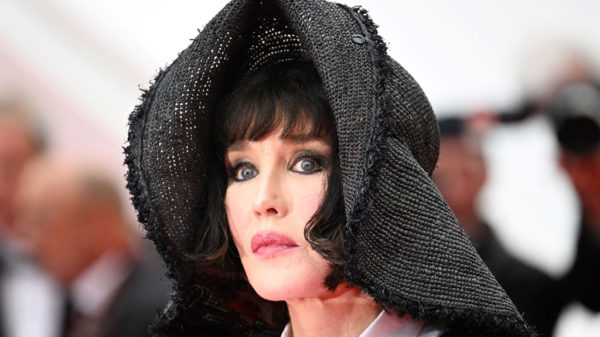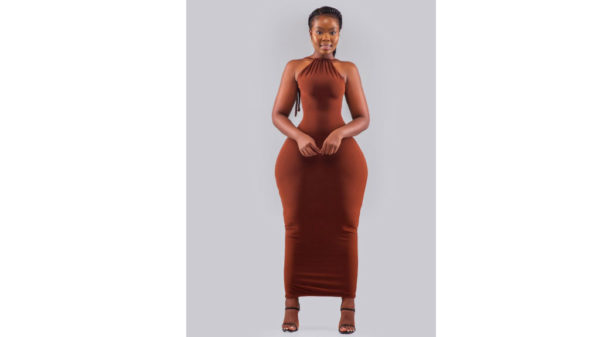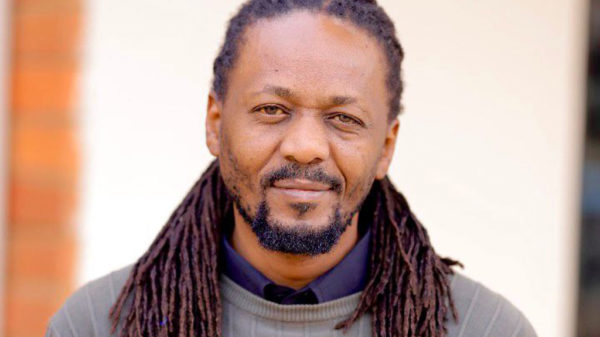Audio and video. These days, a good song is incomplete without a music video and artistes are taking care to impress with their music video as it makes or breaks a song, writes Ian Ortega
In the early 90s, no one could have imagined that there would be a music awarding ceremony just to recognise Ugandan artistes’ music videos. Videos from Ugandan musicians were even inexistent. The only TV station was UTV and it used to rotate videos from Congolese musicians like Kanda Bongo Man and Pepe Kale on their Music Africa show. Decades down the road, we have awards aimed at rewarding musicians, based on their music videos in the recently introduced Club Music Video Awards. If the awards could say it all, may be, they are a rubberstamp that we’ve walked a great journey on the music videos track in Uganda.
In the early late 80s and 90s, our only TV station closed at midnight, had limited slots for music and few could even afford the luxury of owning a TV set. It’s no wonder that this period had almost no music video to talk of as musicians had no motivation to make them. The only available videos were shot while someone was performing on stage. The Kadongo kamu singers who ruled the era were not open to the idea of music videos, after all their songs lasted close to 30 minutes as opposed to today’s three and a half. The equipment itself was non-existent. One would have expected the Sweden-based Philly Bongole Lutaaya (R.I.P) to spearhead the music videos phenomenon in Uganda but he never did, perhaps Sweden was another conservative country, if he had been in the US, then perhaps, we would have seen some magical Michael Jackson music videos of sorts from him.
The Journey Begins
When international channel MTV that focuses mainly on playing music videos was launching its programming in 1981, it was a risky venture to imagine that a music video could be taken serious. It raised the bar in the west with the likes of Michael Jackson making ground breaking videos like Thriller. But back home, a musician making a music video was still unheard of. It wasn’t until 1988 that Hope Mukasa began the revolution by making a video for his single If Only that headlined his Made in Uganda album. Not even the likes of Afrigo Band whose music was very popular could make music videos.
In 1993, Peter Ssematimba, who helped urbanise Uganda music with his Dungeon Studios introduced to us the Perfect Generation group with their single Positive Change, complete with a music video. The video was shot at Sheraton Hotel, and it tried to define the modern journey that music videos were meant to take – urban costumes, good choreography and beautiful girls, the recipe for a good music video were all in the mix.
New Millenium, new trend.
The whole notion of music videos was to be taken serious after the millennium was welcomed. First was Chris Ireland who musically ushered us into the new millennium with the Mellium Song that had all Ugandan stars of the time.
The ground was set, more TV stations like WBS, which began broadcasting in January 1999 provided a platform for music videos to be played. New stars like Jose Chameleone and Bebe Cool were emerging and they accompanied their hit songs with videos. Chameleone’s Mama Mia hit was accompanied by a video that had cars like BMWs and Mercedes, setting a trend. To compete in the industry you now had to accompany your song with a video.
With this development, music video makers had to emerge. Andre Ringen of Paparazzi, then a photo studio and Donald Mugisha of Deddac joined forces and shot All I Wanna Know, a song by Klear Kut and Juliana Kanyomozi and gave it that western touch. The video had sleek cars, motor bikes and bikini clad girls dancing. It was another risk taken in a conservative nation that was not yet used to seeing semi-nude bodies openly flaunted. However the dances really got the youths hooked to the video. Juliana who was pregnant at the time of making the video didn’t feature in it, but there was a lot of eye candy in the bikini clad video vixens.
Meanwhile, more stations like EATV that played local music videos emerged. So much was EATV’s power that in fact Ugandans only got to know of then Tanzania based musician Ziggy Dee after EATV put his Eno Mic video on high rotation, making him a household name in Kampala. Everyone else who wanted to become a star knew the magic lay in a good music video.
The Obsession Videos
One group that contributed to the development of music videos was the Obsessions. Their Nod Ya Head left us in awe. This one was shot by Twisted Imagez/Deddac. The dances were well choreographed and former Namasagali College Headmaster Fr John Grimes must have been proud of this group that had most of his former students.
The Obsessions boys had been singers and the girls were the dancers. When the boys broke up, the girls took up the mantle as the singers and continued with their good videos. The Obsessions did not escape controversy with one of their videos – Wekuume. The video rubbed conservative Ugandans the wrong way as the girls used their hands to hold their breasts in the video – to many, they had crossed the line. Even more liberal EATV banned the video as the temptations in it were too much to bear.
Exposing too much flesh in Ugandan music videos is still a thorny subject. Three years ago, Iryn Namubiru released her Bona Obasinga music video clad in a swim suit. This got tongues wagging and she later had to shoot a more decent video for the same song.
Awards winning videos
Over time, the quality of our music videos has been appreciated internally and externally. We had Ragga Dee as the video maestro during the times of the Pam Awards where he kept winning one award after another. This wasn’t mainly for finesse of the video but rather comical storylines that kept viewers hooked. His video Oyagala Cash which showed a woman leaving a boda boda man for a Hummer driving loaded fellow won best video award in 2006.
Fooda of East World was video of the year 2004. Hitaji by Blu*3 took the award in 2005. Blu*3 repeated the feat with their Burn music video during the 2007 awards.
There have been personality cults when it comes to great music videos. Grace Nakimera, Ragga Dee, Blu*3 and Navio have maintained their record of outing well-shot music videos with well-thought out storylines.
On the continental level, Keko brought home the Channel O Most Gifted East African music video award for her song How We Do It featuring Goodlyfe in 2011 and was nominated again for the Most Gifted Female Video award and Most Gifted East African Video for her Make You Dance song in 2012. Navio and Maurice Kirya were among the other nominees in the categories of East African Video and Afro-Pop Video respectively.
Keko, was not the first Ugandan on the continental stage as far as music videos were concerned. In 2007, Bebe Cool and his fellow East African Bashment Crew members Nazizi and Wyre from Kenya shot the Kube music video for over Shs10m and it went on to win a Channel O Music Video of the year award.
The expensive videos
Back then, it was unheard of to spend over Shs1m to shoot a music video, but artistes have in the recent past begun to realise the power of music videos in helping them acquire a wider audience outside our borders. Channel O, MTV and Trace TV only play high quality videos. Now more artistes are willing to inject large sums of money into shooting a high quality music video.
Bobi Wine took video maker Kim XP and his team to Dubai to shoot his Matyansi Butyampa video. Though it had quality visuals, it failed on the storyline and it was one of those videos that failed to meet the expectations of many. Several other musicians have used every opportunity that they are abroad, to shoot music videos. Unfortunately, most of them use amateur video makers because of the costs involved in hiring professional people. So we always end up with average videos with exotic sceneries.
But some musicians are investing in hiring professionals and their videos don’t come cheap. Teenage rapper Young Zee apparently shot his Criminal Swag video for Shs80m in South Africa last year. Unfortunately the video failed to impress mostly because his music was as immature as he is.
But before Young Zee broke the bank, Navio had reportedly released Uganda’s most expensive music video estimated at a $20,000 (about Shs52m) for his Raw in 2010. He also shot One and Only at about Shs40m in South Africa and his recent videos Trouble and Kata did not come cheap either.
Some have argued that Young Zee and Navio are rich kids whose parents bankroll their careers, but that hasn’t stopped other musicians whose parents are not financing their careers to shoot high budget videos.
Tough Sunday, a South African company behind Navio’s videos have also shot five videos for the Goodlyfe Crew at apparently $10,000 (Shs26m) per video. This investment has already paid off with the boys being nominated for the BET awards in the US, though they didn’t win.
Viral videos
We have also had those Ugandan Music Videos that went viral on youtube. The most viewed music video of all time in East Africa is actually by a Ugandan artiste. The video has over 23m views on Youtube (about three quarters of the Ugandan population). The Willi Willi video by Pati and Producer Didi has gone on to introduce a dance stroke to the world and to write its name in the books of Ugandan music videos history. However, not many Ugandans have seen the video. Stamina by Eddy Kenzo was another Ugandan song that rode on the populism of its music video and dance strokes.
The video producers
In the 90s and early 2000s, video shooting was left to movie directors and movie companies. Companies like VCL studios of The Ebonies shot a good number of Ugandan music videos. Except for the audios and dance strokes, nothing differentiated a Ugandan music Video from a Ugandan movie. The special effects were amateurish and the editing left a lot to be desired.
Some other video producers like Nyonjo and MGS that were mainly covering weddings and other events also jumped into the fray. Later the likes of Deddac, Twisted Images, ImageVision and Mega Vision specialised in music video production.
The list has since grown and there is a new crop of music video producers who are specialising in just turning musicians’ songs into visual works. Take Bashir Lukwamuzi of Badi Films, the face behind Keko’s Channel O award winning video. One would have to part with more than Shs3m to have his services. KimXP of Seasons Filmz on the other hand introduced packages to suit everyone in their class and thus had Season one, two, three and four in their order of increasing video quality. Other video producers include Centrix who shot Grace Nakimeera’s Anfukuula video not forgetting the Jah Live production house that has worked with almost every Ugandan artiste, plus Super Star Films and Swangz Videos among others.
Are we there yet?
Whereas we have grown as far as music videos are concerned, it’s argued by many that we are not yet at adulthood. “Of course the aesthetics are better these days. Better shots, lighting and synchronisation of video and audio … but the storyboarding is lacking. Try muting the audio while watching a video and see if there is a story beyond greased up video vixens bumping and grinding,” says Moses Serugo, an entertainment critic with Kampala1ne.
Though they are far better than then, ‘averagism’ still lingers on.
Our Lighting and colour has improved but we are still failing on the special effects and the use of technology. The storylines are still so predictable, our locations are so basic and need more thought just like the post-production digital effects. The fast-cutting and montage editing is commendable and so are the close-up shots. However, with the Club Music Video awards, one can hope that if these are maintained year after year, greater effort will be directed into the field and artistes will stop making music videos for the sake of accompanying popular audio. Despite the set-backs, we’ve undergone an evolution, we are now definitely far better than we were then.














